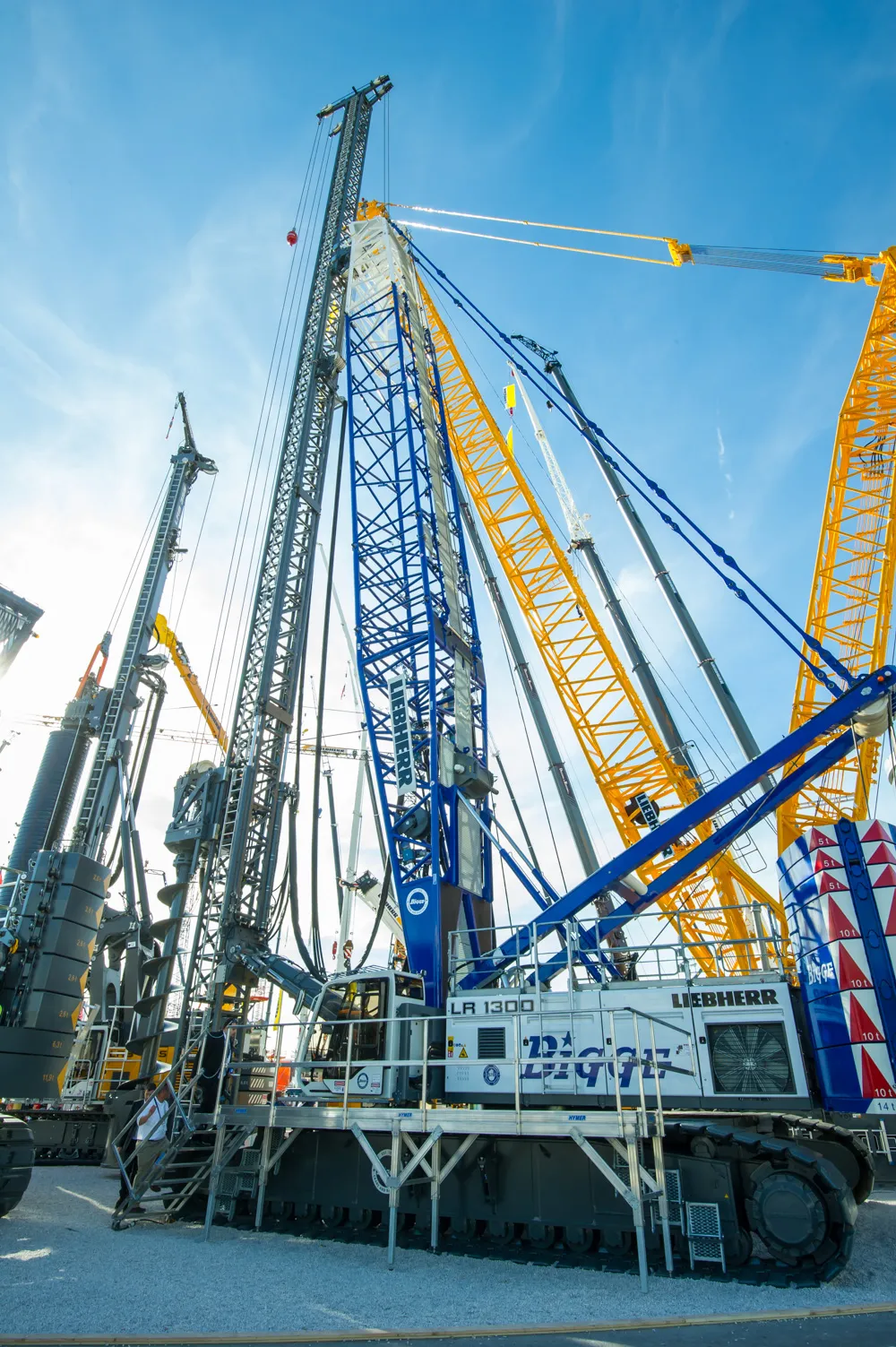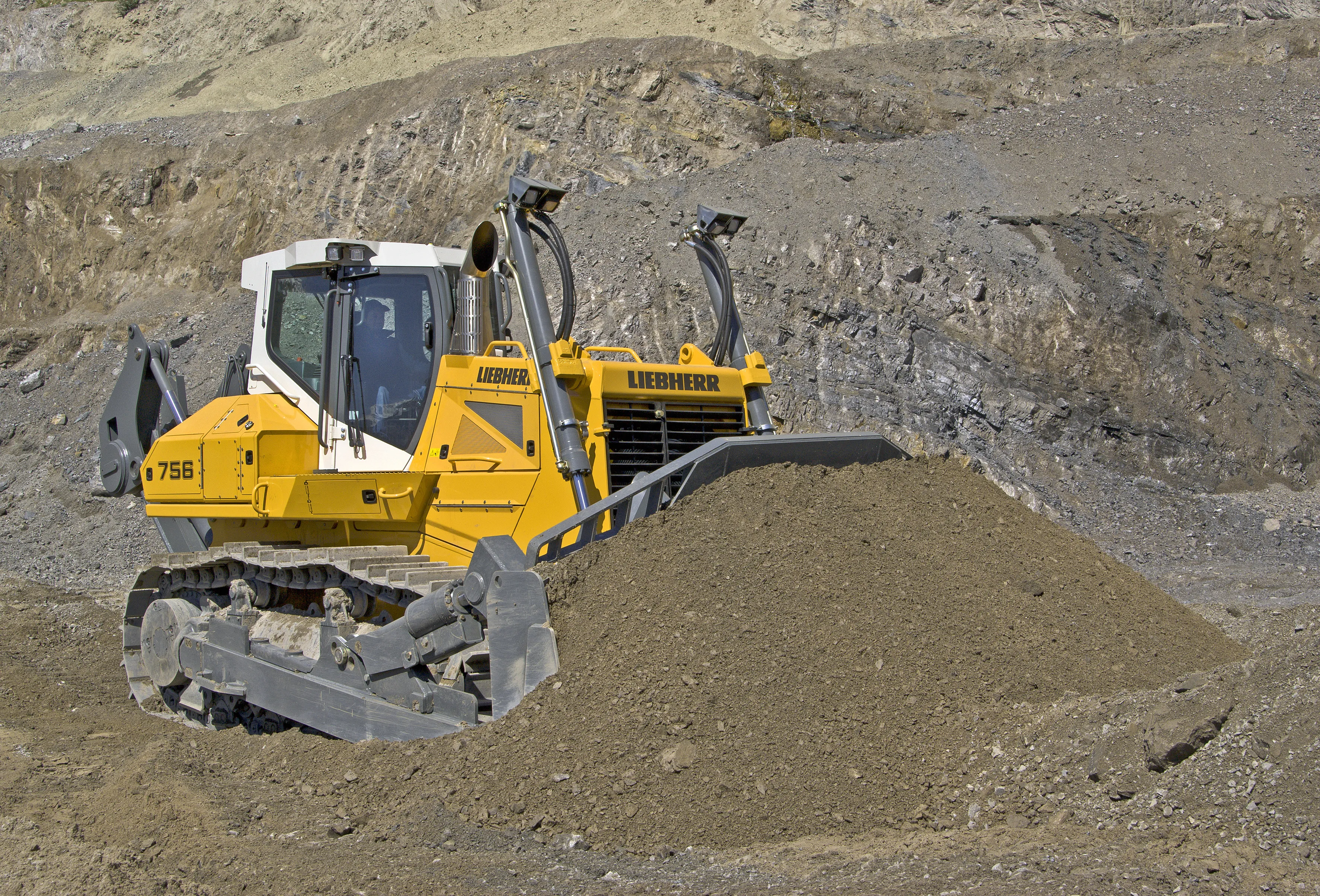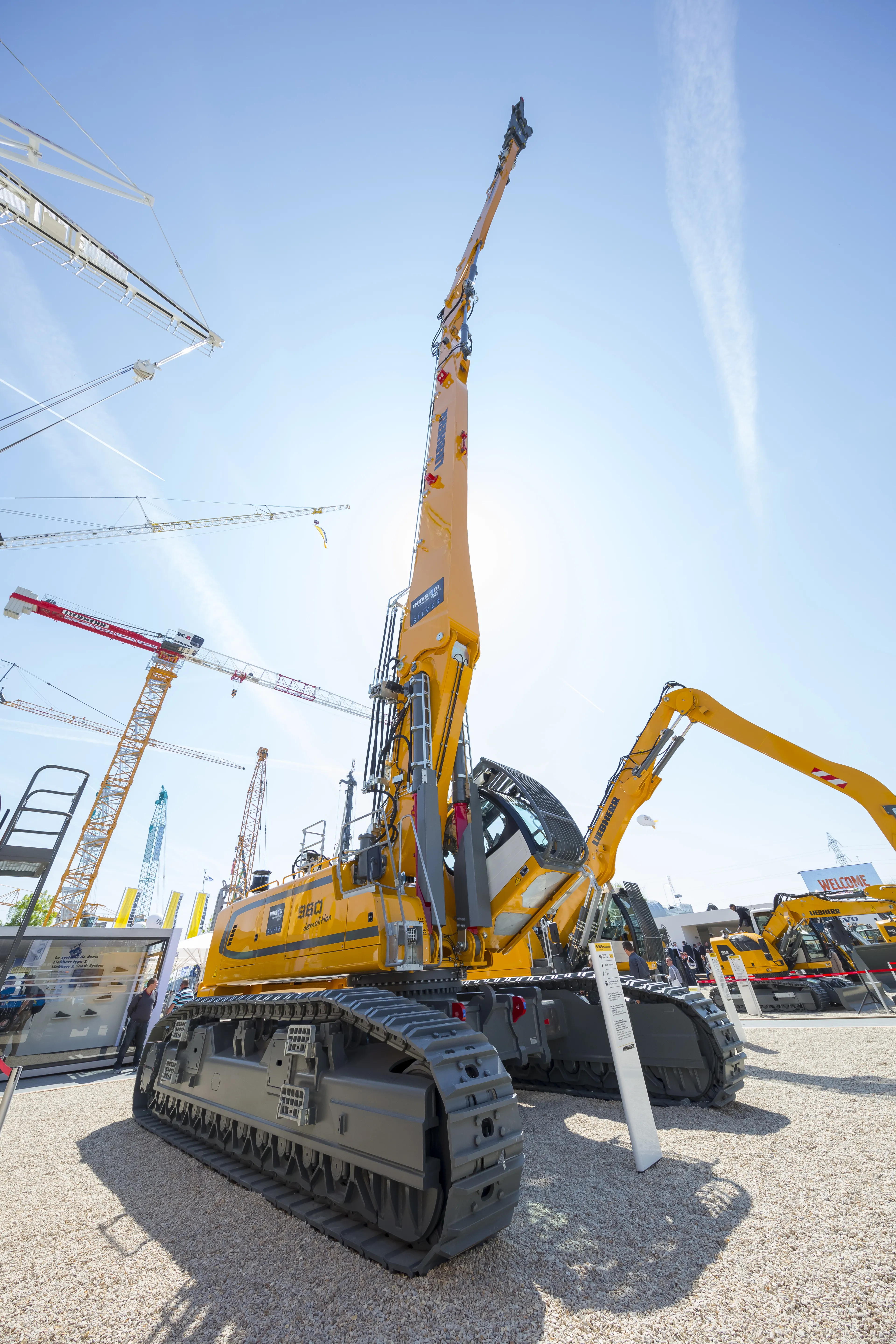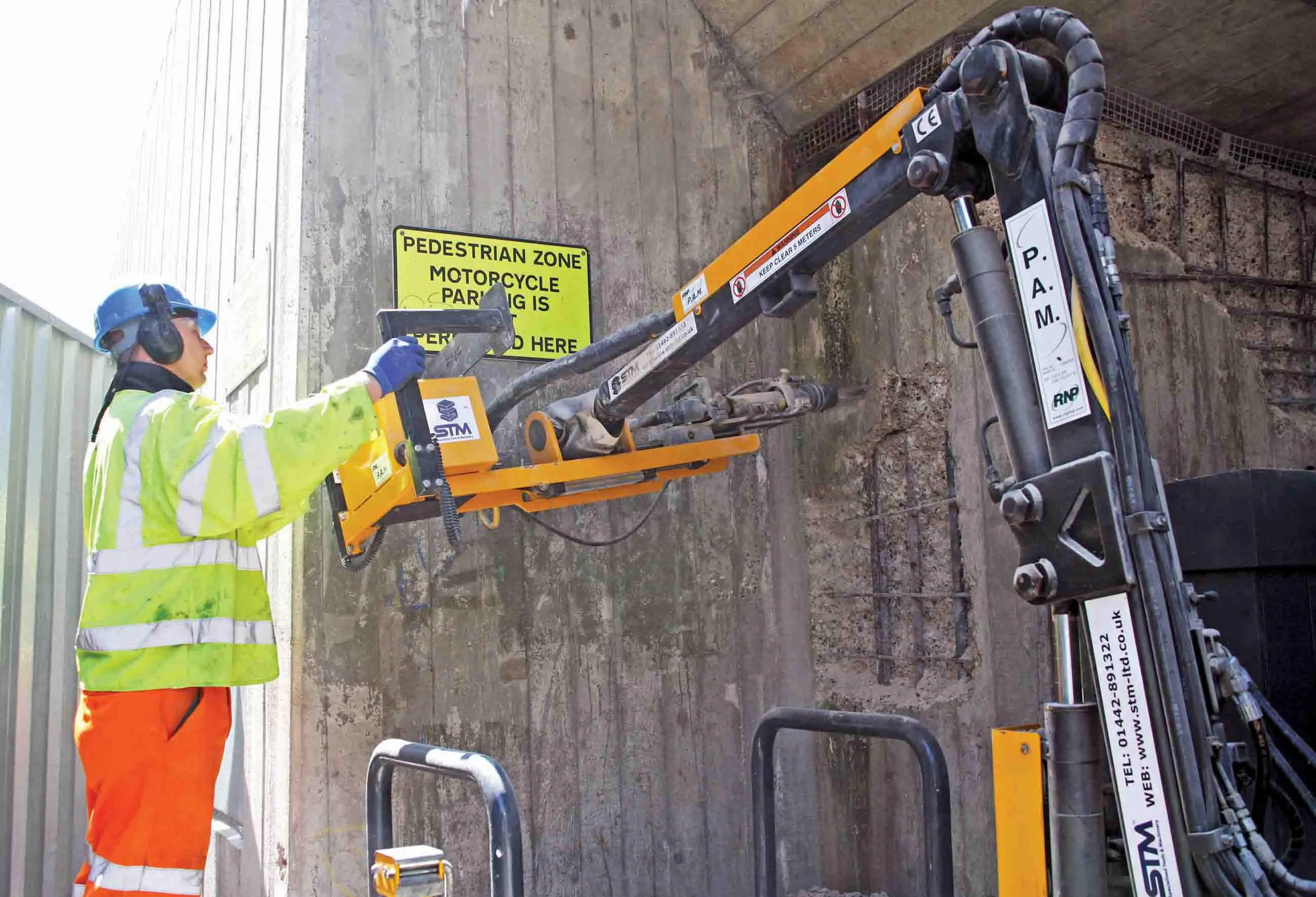
At CONEXPO CON/AGG 2017,
The crawler crane model LR 1300 with attached fixed leader system, serves as the basic machine for the piling rig LRH 600. In this configuration, the rig enables a diverse range of applications including: piling work with a hammer or vibrator, drilling operations with continuous flight auger or down-the-hole hammer, and various soil improvement methods.
The leader elements of the LRH 600 allow quick and easy assembly through the pin connections. Stability is ensured by the lattice boom design and through the kicker, secured via supporting tubes at the boom head. The two compensating cylinders ensure that the leader always remains parallel to the upper carriage, and provide the maximum transmission of the torque.
Inclination and radius can be adjusted using another pair of cylinders. The LRH 600 achieves an effective working length of 164 51 meters and a maximum radius of 15 meters with a fixed leader.
The LRB 355 has been especially equipped with a larger undercarriage for the US market, which increases the machine’s already high level of stability.
Another advantage of the new undercarriage is the minimized transport weight. The jack-up system allows the crawlers to be dismantled, resulting in a transport weight of only 42 US tons (38 tonnes) for the basic machine.
The machine’s parallel kinematics provide for a large operating area. Since all winches are mounted directly on the leader, this allows for a direct view from the operator’s cab to the main winch, and ensures the ropes do not move during leader adjustment.








